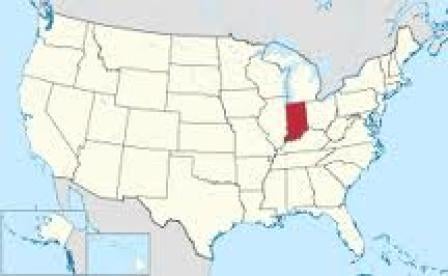In State Auto Mutual Ins. Co. v. Flexdar, Inc., No. 49S02-1104-PL-199, ___ N.E.2d ___ (Ind. Mar. 22, 2012), the Indiana Supreme Court last week affirmed longstanding Indiana precedent holding that the standard “pollution exclusion” typically appearing in commercial general liability (“CGL”) policies issued from approximately 1985 to 2005 is ambiguous and unenforceable as to most, if not all, types of environmental liabilities. This longstanding principle of Indiana law has been under assault in Indiana courts in recent years by insurers seeking to overturn this precedent.
The Indiana Supreme Court’s opinion in Flexdar provides added security to policyholders whose policies are governed by Indiana law that their historical CGL coverage may be available to cover costs associated with government-mandated cleanups, as well as private party lawsuits alleging bodily injury or property damage arising from environmental conditions. Policyholders who are either based in Indiana or who have substantial Indiana operations stand to potentially benefit from this Indiana Supreme Court ruling. It is important to note, however, that while the ruling means that coverage for environmental liabilities is not automatically excluded, coverage also is not automatically guaranteed as a result of this ruling. As always, all pertinent policy provisions and considerations must be evaluated to assess their impact on the availability of coverage in each particular matter.
In Flexdar, the Indiana Department of Environmental Management (“IDEM”) demanded that Flexdar, an Indianapolis-based rubber stamp and printing plate manufacturer, clean up trichloroethylene (a chemical solvent commonly known as “TCE”) that was found in soil and groundwater at Flexdar’s manufacturing site. Flexdar sought insurance coverage from its liability insurer, State Auto, for the legal, investigative, and remediation costs of complying with IDEM’s demand. State Auto then sued Flexdar, seeking a court determination that the “pollution exclusions” in its policies from 1997 to 2002 absolved it of any obligation to provide coverage to Flexdar for IDEM’s demand. The State Auto policies contained not only the standard CGL “pollution exclusion,” but also an Indiana-specific endorsement stating that the exclusion “applies whether or not such irritant or contaminant has any function in your business, operations, premises, site or location.”
The Indiana Supreme Court succinctly summarized its holding in the Opinion’s first two sentences: “In this case we examine whether the language of a pollution exclusion in a commercial general liability policy is ambiguous. We hold that it is.” Specifically, the Court held that the definition of “pollutant” in the State Auto policies was ambiguous, rendering the “pollution exclusion” unenforceable. The State Auto policies defined “pollutant” as “any solid, liquid, gaseous or thermal irritant or contaminant, including smoke, vapor, soot, fumes, acids, alkalis, chemicals, and waste.” The Court observed that if this definition were read literally, “practically every substance would qualify as a ‘pollutant’ . . . , rendering the exclusion meaningless.” Because the definition of “pollutant” in the State Auto policies did not specifically identify TCE as a “pollutant,” the Court held that the “pollution exclusion” was ambiguous and unenforceable, and did not preclude coverage for Flexdar’s environmental liabilities to IDEM.
In reaching this result, the Court affirmed longstanding Indiana precedent, and confirmed the approach it had taken on the previous occasions on which it addressed this exclusion. See, e.g., American States Ins. Co. v. Kiger, 662 N.E.2d 945 (Ind. 1996) (gasoline not specifically identified as a “pollutant”; “pollution exclusion” unenforceable); Seymour Mfg. Co. v. Commercial Union Ins. Co., 665 N.E.2d 891 (Ind. 1996) (following Kiger); Freidline v. Shelby Ins. Co., 774 N.E.2d 37 (Ind. 2002) (carpet glue fumes not specifically identified as a “pollutant”; “pollution exclusion” unenforceable). The Court noted that numerous Indiana Court of Appeals decisions also have reached similar results through the years.
Finally, the Court observed that insurers have a simple remedy available if they wish to unambiguously exclude pollution coverage in their commercial general liability policies: “By more careful drafting State Auto has the ability to resolve any question of ambiguity.” The Court noted that State Auto had in fact done so in 2005, after the State Auto policies at issue in Flexdar. State Auto’s 2005 “pollution exclusion” endorsement specifically identifies TCE and a laundry list of other specific substances in the definition of “pollutant.” Like State Auto, many insurers have begun to adopt this type of specific definition in Indiana, and after the Indiana Supreme Court’s opinion in Flexdar, it is anticipated that many more insurers will do so. Accordingly, as with all insurance coverage issues, the terms of the specific policies at issue must be examined to determine how they apply to a specific situation. Regardless, Indiana policyholders have now received powerful confirmation from the Indiana Supreme Court that coverage for environmental liabilities will not automatically be precluded under policies with the same “pollution exclusion” and “pollutant” language in the policies at issue in Flexdar.
Flexdar was decided on a 3-2 vote, with Justice Dickson concurring in Justice Rucker’s Opinion for the Court; Justice David concurring in the result; and Chief Justice Shepard (who recently retired) joining in Justice Sullivan’s dissent.





 i
i


